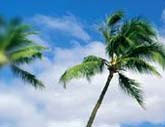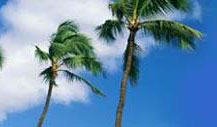

South Florida
Water, Sustainability, and Climate Project
Water, Sustainability, and Climate Project
NSF/USDA NIFA Supported
| |
| Home |
Metadata: SFWSC analyses of POM for source characterization from Shark River Slough and Harney River, Everglades, South Florida in November 2011
|
Return to the Data Set Summary Table Search for SFWSC Data Sets |
View
this metadata as: HTML Text XML |
Dataset title
SFWSC analyses of POM for source characterization from Shark River Slough and Harney River, Everglades, South Florida in November 2011
Dataset ID
Dataset Creator
Metadata Provider
Dataset Abstract
Dataset Keywords
Intellectual Rights
Geographic Coverage
Temporal Coverage
Maintenance
Dataset Contact
Methods
SFWSC_004
Dataset Creator
| Name: | Dr. Rudolf Jaffe |
| Position: | Principle investigator |
| Organization: | South Florida Water, Sustainability, and Climate Project |
| Address: | Florida International University University Park ECS 119 Miami, FL 33199 USA |
| Phone: | 305-348-2456 |
| Fax: | 305-348-4096 |
| Email: | jaffer@fiu.edu |
| URL: | http://serc.fiu.edu/sercindex/index.htm |
Metadata Provider
| Organization: | Florida Coastal Everglades LTER Program |
| Address: | Florida International University University Park OE 148 Miami, FL 33199 USA |
| Phone: | 305-348-6054 |
| Email: | fcelter@fiu.edu |
| URL: | http://fcelter.fiu.edu |
Dataset Abstract
As part of the larger NSF WSC funded project, an SF6 tracer study was conducted in November of 2010 by working groups form ENP, FIU and Univ. of Hawaii. This work included the release of the tracer (SF6), which was sampled in a lagrangian approach as the tracer patch moved from the fresh water portion of the system to the mangrove ecotone along the Shark and Harney Rivers. The goal of this study was to measure carbon export through the system. Annie Palya used our new CRDS system to measure the isotopic composition (Delta13C) of the DOM and DIC (analyzed at RSMAS) during this study, as carbon isotopes may help to resolve different sources of carbon. This analytical approach is relatively new, and will be important for understanding the C-dynamics within the FCE. Total organic carbon (TOC), dissolved organic carbon (DOC), and dissolved inorganic carbon (DIC) concentrations from water samples collected within the SF6 tracer plume will be analyzed using an OI Analytical 1030W TOC analyzer. Dissolved organic matter (DOM) will be characterized by means of optical properties analyses as previously described (Chen et al., 2010 and references therein) using UVVis and fluorescence methods including Excitation Emission Matrix (EEM) with parallel factor analysis (PARAFAC). This portion of the study (one sample collected every 2 hrs throughout the tracer experiment) will be conducted as a leverage through the FCE-LTER program. The OI system is coupled to a Picarro CRDS system to measure 13C isotopic composition of the different carbon fractions. Standard water quality procedures will be used during sample collection and storage following the guidelines of the Southeast Research Center Water Quality Laboratory at Florida International University. TOC, DOC, and DIC will be analyzed by using an OI Analytical 1030W TOC analyzer coupled to a Picarro CRDS system to measure 13C isotopic composition of the different fractions of TC from the water sampling at the prescribed collection intervals. Standard water quality procedures will be used during sample collection and storage following the guidelines of the SERC Water Quality Laboratory. We will use the same analyzer to examine C and N ratios of estuary taxa, and thus determine food web structure in the mangrove zone. We will complement the stable isotope analysis with nonlethal stomach content analyses, which provide a high-resolution (i.e., to the species level) snap shot of diet, and predator-prey interactions (Bearhop et al. 2004).
Dataset Keywords
FCE and WSC
Florida Coastal Everglades LTER
ecological research
long-term monitoring
Delta 13 C isotope
C-111 Basin
dendrochronological record
isotopes
pond cypress
freshwater
estuarine
trees
basins
emissions
fluorescence
POM
DOC
DIC
source characterization
tracer
Florida Coastal Everglades LTER
ecological research
long-term monitoring
Delta 13 C isotope
C-111 Basin
dendrochronological record
isotopes
pond cypress
freshwater
estuarine
trees
basins
emissions
fluorescence
POM
DOC
DIC
source characterization
tracer
Intellectual Rights
These data are classified as 'Type II' whereby original SFWSC experimental data collected by individual SFWSC researchers are to be released to restricted audiences according to terms specified by the owners of the data. Type II data are considered to be exceptional and should be rare in occurrence. The justification for exceptions must be well documented and approved by the lead PI and Site Data Manager. Some examples of Type II data restrictions may include: locations of rare or endangered species, data that are covered under prior licensing or copyright (e.g., SPOT satellite data), or covered by the Human Subjects Act, Student Dissertation data and those data related to the SFWSC project but not funded by the National Science Foundation (NSF) WSC program (EAR-1204762) and the NIFA Award Number 2012-67003-19862. Researchers that make use of Type II Data may be subject to additional restrictions to protect any applicable commercial or confidentiality interests. For a complete description of the SFWSC Data Distribution and Data User Agreement, please go to SFWSC Data Management Policy: http://eimc.fiu.edu/projects/SFWSC/SFWSC_DataManagementPolicy.pdf. Additionally, two copies of the manuscript must be submitted to the South Florida Water, Sustainability and Climate Project, c/o Dr. Mike Sukop, Department of Earth & Environment, Florida International University, ECS 347, 11200 SW 8th Street, Miami, Florida 33199.
Geographic Coverage
Study Extent Description
The Study Extent of this dataset includes the Shark River and Harney River within Everglades National Park (FCE), South Florida
Bounding Coordinates
| Geographic description | West bounding coordinate | East bounding coordinate | North bounding coordinate | South bounding coordinate |
|---|---|---|---|---|
| Shark River and Harney River, Southeast Everglades | -81.145 | -81.089 | 25.431 | 25.411 |
| Florida Coastal Everglades LTER Study Area: South Florida, Everglades National Park, and Florida Bay | -81.078 | -80.490 | 25.761 | 24.913 |
All Sites
| Geographic Description | Longitude | Latitude |
|---|---|---|
| Shark and Harney Rivers, Everglades, South Florida | -80.989 | 25.347 |
Temporal Coverage
Start Date:
2011-11-10
End Date: 2011-11-15
End Date: 2011-11-15
Maintenance
This is a POM dataset and subsequent data will be appended and metadata updated.
Dataset Contact
| Position: | Information Manager |
| Organization: | Florida Coastal Everglades LTER Program |
| Address: | Florida International University University Park OE 148 Miami, FL 33199 USA |
| Phone: | 305-348-6054 |
| Fax: | 305-348-4096 |
| Email: | fcelter@fiu.edu |
| URL: | http://fcelter.fiu.edu |
Methods
Sampling Description
Water samples will be collected every 5 hours within the SF6 tracer plume for a period of 3 days. For each sample, 50 liters of waters will be collected at 20cm depth and kept in clean polycarbonate bottles (Nalgene) until transport to the laboratory (within 8 hours of collection). Samples are to be kept on ice and immediately vacuum filtered through pre-combusted glass-fiber filters with 0.7μm nominal pore size (GF/F). The filters with particulate material are freeze-dried at -40oC under the vacuum condition (<100x10-3 mBar).
Method Step
Description
Description
Water samples will be collected every 5 hours within the SF6 tracer plume for a period of 3 days. For each sample, 50 liters of waters will be collected at 20cm depth and kept in clean polycarbonate bottles (Nalgene) until transport to the laboratory (within 8 hours of collection). Samples are to be kept on ice and immediately vacuum filtered through pre-combusted glass-fiber filters with 0.7μm nominal pore size (GF/F). The filters with particulate material are freeze-dried at -40oC under the vacuum condition (<100x10-3 mBar). After that, dried samples will be kept at -20oC until analysis. The analytical procedure used in this study is described by Jaffé et al. (2001). Briefly, dried filters are Soxhlet extracted with pure methylene chloride (Optima, Fisher, USA) for 24 hours. Activated copper is added to remove any elemental sulfur from the organic extracts. Total extractable organics are saponified with 1.0N KOH and separated into neutral and acid fractions. The neutral fraction will be spiked with known amounts of squalane and per-D-phenanthrene as internal standards for biomarker quantification. The % error of the compound quantifications was of the order of 5-8%. Prior to analysis by GC-MS, the neutral fraction is derivatized with bis(trimethylsilyl)trifluoroacetamide (BSTFA) after addition of 10μl pyridine. Both total ion scans and selected ion monitoring will be used for the analyses. Analyses will focus on Taraxerol (mangrove biomarker), C20 HBI (Everglades periphyton biomarker), and C25 HBIs (marine diatom biomarkers) in an attempt to differentiate freshwater end-member, mangrove estuary and marine end-member contributions to the POM pool. A chromatograph (model HP 5973) equipped with a mass selective detector (GC-MS) will be used for the analysis and operated in electron impact (EI) ionization mode at 70eV. A DB5 MS capillary column (30m, 0.25mm i.d., 0.25μm) will be used for the analyses. The GC oven will be programmed from 60 to 180oC at a rate of 6.0oC/min after 1 min at the initial temperature; then increased to 315oC at a rate of 3oC/min and kept at the maximum temperature for 15 min. The identification of individual compounds is performed through comparison of chromatographic retention time, mass spectral interpretation, and comparison with mass spectra of authentic standards.
Instrumentation
polycarbonate bottles (Nalgene)glass-fiber filterschromatograph (model HP 5973) mass selective detector (GC-MS)DB5 MS capillary columnGC oven